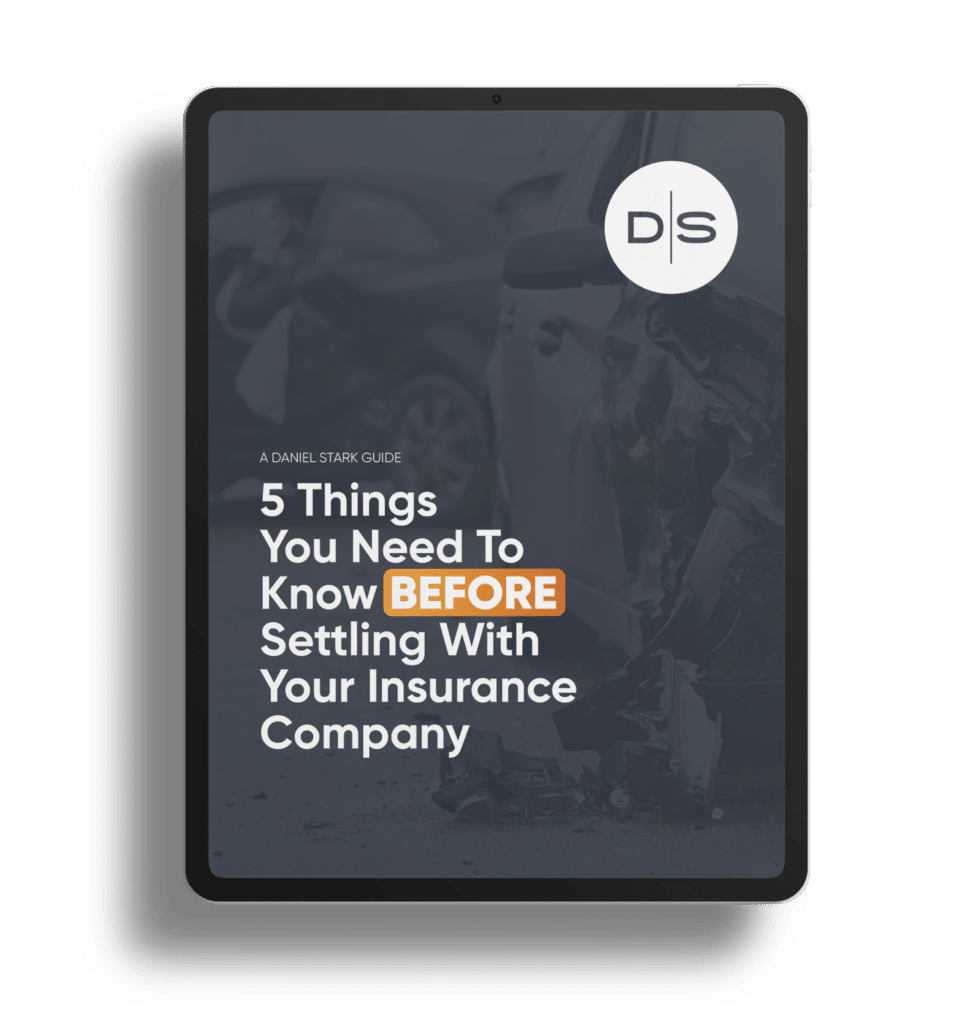Author: Shelby Benavidez
Contributing Attorney: Darla Canon, attorney team lead
Trial work is storytelling. Not the fictional kind – but the disciplined, evidence-anchored, strategically crafted narrative that helps jurors understand a client’s lived experience in a way that is both credible and compelling. And as any trial lawyer knows, the story you bring into the courtroom isn’t something you spontaneously construct at counsel table. It begins long before you ever pick a jury.
In a conversation with Darla Canon, attorney team lead at Daniel Stark Injury Lawyers, she emphasized a truth that seasoned trial lawyers know instinctively: voir dire, evidence management, and trial binders aren’t separate tasks. They are interconnected parts of the same narrative-building process. When done well, they position you to pivot when the unexpected happens (which it always does).
Below, we unpack Canon’s insights about how these components work together to support effective trial advocacy, and why preparation is the ultimate “cheat code” for trial success.
Voir Dire: Your First Chance to Connect the Jury to Your Client
Voir dire is often the shortest phase of trial, yet it carries disproportionate weight. It’s your first opportunity to introduce jurors to the themes, tensions, and human elements that will define the evidence they’re about to hear. But Canon believes that voir dire isn’t just about juror screening – it’s an early opportunity to test your narrative.
During voir dire, you learn what concerns or biases surface when jurors hear your case themes, which “case warts” may cause friction, what emotional notes resonate with the panel, and how jurors perceive the client’s story at a glance.
“You only get an hour or two with people you’re meeting for the first time,” Canon says. “So you’re asking, ‘What do these jurors need to hear to connect with my client? How does this first impression set the tone for the whole trial?’”
The effectiveness of voir dire depends on how deeply the attorney already understands the evidence. And that understanding is only possible through early, thorough preparation.
Structuring Your Evidence
Trials are ultimately about presenting evidence with extreme caution and preparation. Every exhibit must have a purpose, every document must connect to the story, and crucially, every piece must satisfy foundational requirements.
This is where many young attorneys get tripped up.
“Evidence doesn’t come in just because you hand the judge a medical record,” Canon explains. “You have to lay the foundation. You have to prove authorship, timing, authenticity – everything.”
That means thinking about witness testimony and evidence admissibility early, often months or even years before trial. Sometimes, the doctor who documented a critical piece of information won’t be the same person taking the stand. When that happens, the attorney must plan alternate routes to admission, preferably long before they’re standing in a courtroom with the jury waiting.
This is where organized systems matter. At Daniel Stark, Litify’s Trial Storyboard plays a central role. It maps each witness, the pieces of evidence tied to them, the foundation each exhibit requires, and the order in which the story will unfold.
This structure ensures that nothing falls through the cracks, and that no one realizes too late that “the doctor who saw your client on Day One isn’t the doctor testifying.”
Trial Binders: Preparation You Can Hold in Your Hands
If voir dire is the emotional introduction to your story, and evidence is the backbone of it, trial binders are the tool that keeps everything tethered and accessible. Unfortunately, trial binders don’t magically appear the week before trial. They are the product of countless hours of pretrial work, and they rely heavily on the entire legal team.
“Everybody helps build them,” Canon says. “Paralegals, legal support staff – it’s a team effort. Trial binders are labor-intensive, so we start early.”
A well-constructed binder should include exhibits and depositions, jury charge, witness lists, and expert reports. By outsourcing the labor of assembly to well-trained staff, attorneys gain the mental bandwidth to “sit with the evidence,” refine themes, meet with clients, and prepare to pivot because trial rarely goes according to plan.
“There will always be a surprise,” Canon says. “There will always be a ruling that forces you to shift. You need to be prepared to turn on a dime without losing the thread of your story.”
Thinking About Trial From Day One
Many clients are surprised when their attorneys start talking about trial strategy early in a case – sometimes even before a lawsuit is filed. However, at Daniel Stark, we believe that early thinking leads to optimal preparation.
“I tell clients, ‘Your chances of going to trial are small. But from the beginning, I’m thinking about what this case would look like in front of a jury.’”
That means identifying gaps right away, speculating about admissibility early, preparing for foundation issues long before they arise, understanding how jurors might perceive the client, and gathering evidence that may play a crucial role down the road.
The firm even uses its FSV (Full Settlement Value) process in pre-litigation cases – not just to discuss settlement value, but to consider how the client will present, how certain evidence would come into play, and whether certain case facts strengthen or weaken the story. This ongoing discussion keeps the team aligned and the case trial-ready – even if it never sees a courtroom.
“We talk about trial all the time,” Canon said, “even when we’re nowhere near filing.”
Final Takeaways: Preparation is a Trial “Cheat Code”
In trial work, no matter how carefully you plan, unexpected challenges are inevitable. Flexibility and confidence don’t come from luck – they come from preparation.
“Even the best attorneys get rulings they have to pivot from,” Canon said. “Nothing goes perfectly. You always need a backup to the backup plan.” It’s a lesson that sinks in over time, but rigid trial plans don’t survive the realities of the courtroom. Flexibility comes from knowing your case so thoroughly that surprises don’t derail the story you’re trying to tell.
Preparation is what makes attorneys creative, able to pivot on the fly, confident in front of a jury, and clear in presenting evidence. It simplifies the story, keeps panic at bay, and improves outcomes. “We prepare early and often. We talk about trial constantly. And all of that gives us the freedom to be fully present when we’re in front of a jury,” Canon explains.
Voir dire, evidence management, and trial binders are the framework that lets you tell your client’s story clearly. When you start early, collaborate with your team, and think through everything thoughtfully, you gain the rare combination of meticulous planning and fearless adaptability. That combination is what separates a good trial team from a great one.




